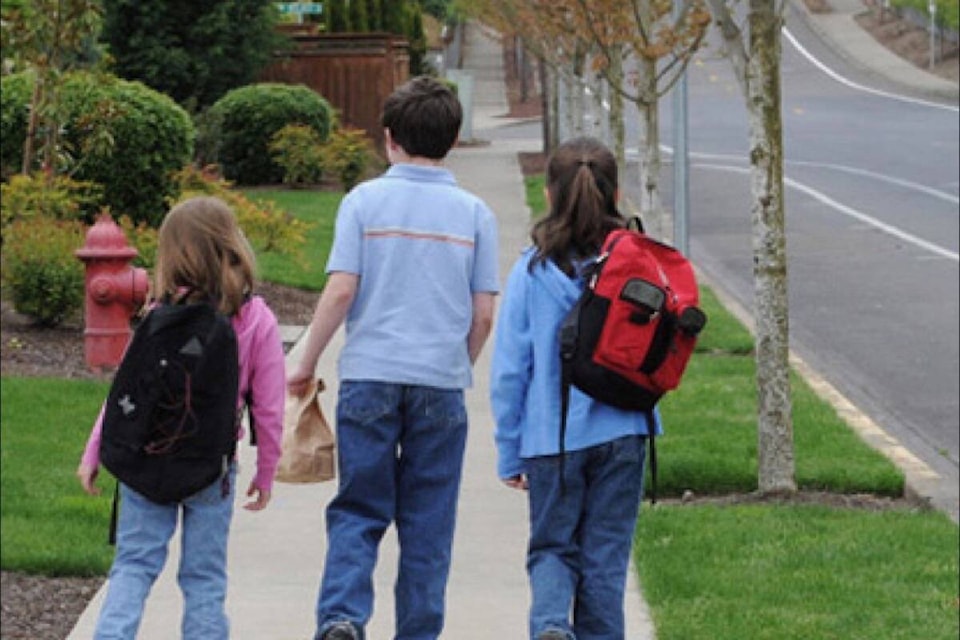School is back in session, meaning school buses — and a lot more vehicles — are on the road. In order to stay safe, and keep others safe, drivers should leave extra travel time, stay focused on the road, and watch for children, especially around school zones.
Every year in B.C., five children are killed and 370 are injured in crashes while walking or cycling. In school and playground zones, 66 children are injured in crashes every year. In the Southern Interior, two children walking or cycling are killed and 38 children are injured in crashes every year. In school and playground zones, eight children are injured every year.
Last year, more 6,940 drivers were ticketed for speeding in school and playground zones in B.C., and the tickets carry hefty fines, plus points on your licence. It’s important to know what the speeds are in different zones, so pay attention to the signs. Every school day, unless otherwise posted, a 30 km/h speed limit is in effect in school zones from 8 a.m. to 5 p.m. In playground zones, a 30 km/h speed limit is in effect every day from dawn to dusk.
Leave your phone alone, and watch for children walking or cycling. Distraction is the leading factor for drivers in crashes involving pedestrians and cyclists.
If a vehicle is stopped in front of you or in the lane next to you, they may be yielding to a pedestrian, so proceed with caution and be prepared to stop.
Watch for school buses. When their lights are flashing, vehicles approaching from both directions must stop.
There are a few things parents can do to keep children safe before, during, and after the daily school run:
Drop off. If you drop off your child in a school zone, allow them to exit the car on the side closest to the sidewalk. Never allow a child to cross mid-block.
Map it out. Plan your child’s walking route to school with them ahead of time. Review street names and landmarks to orient them. Make a fun, interactive game out of guessing the correct traffic signs and meanings with your child along the route.
Crossing basics. Stop at the curb. Look left and right for oncoming vehicles, then look left over your shoulder for vehicles that might be turning. Make sure all vehicles have stopped before entering the road. Make eye contact with drivers before crossing. When the intersection is clear, start crossing and keep looking for approaching vehicles.
Set a good example. Where possible, cross at intersections with a marked crosswalk.
Listen. Put away the electronic gadgets, cellphone, and ear buds while walking or cycling so you can hear approaching traffic.
Be seen. Wear bright clothes and/or reflective gear, especially at night and in poor weather.
editorial@accjournal.ca
Like us on Facebook and follow us on Twitter
